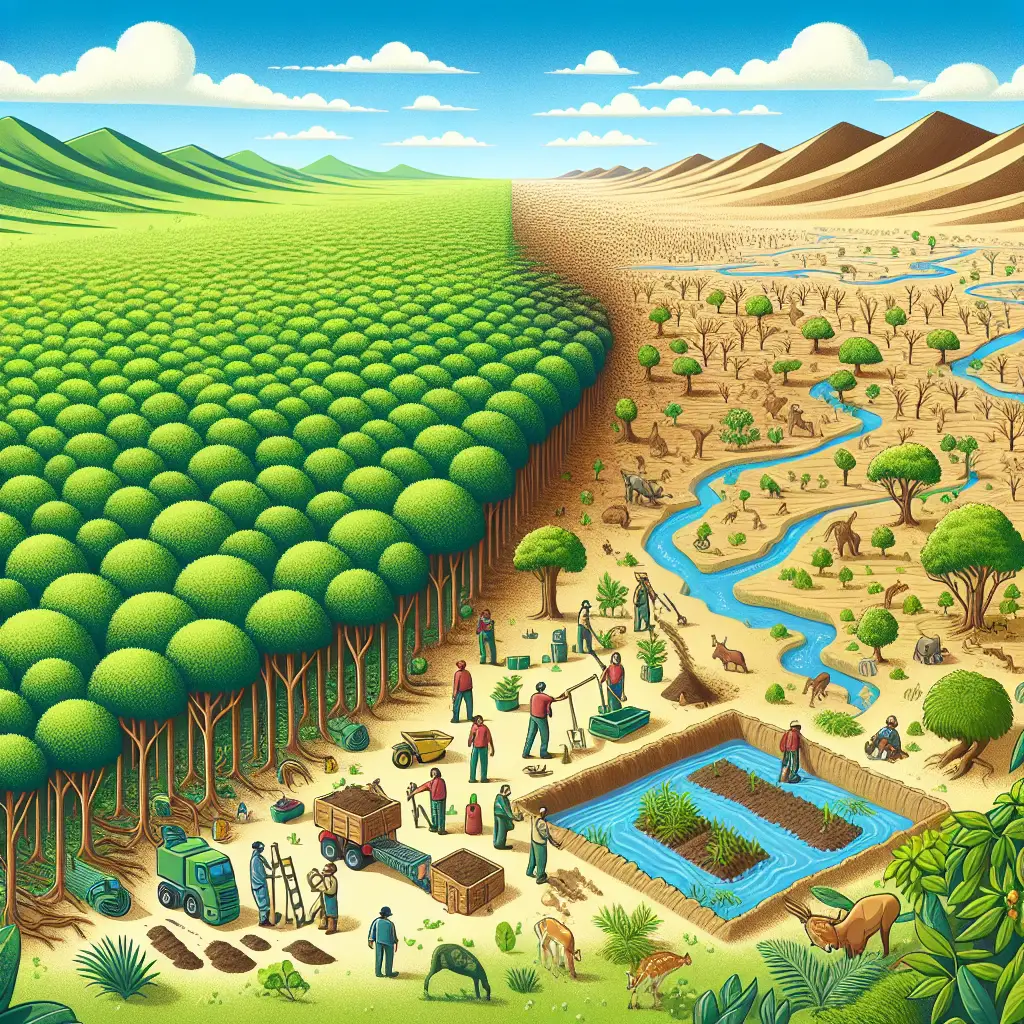Urgent Solutions for Tackling Earth’s Growing Desertification Crisis : Earth’s Desertification Emergency
The phenomenon of desertification is fast becoming an alarming concern on a global scale, threatening ecosystems, livelihoods, and the overall health of our planet. As climate conditions continue to change and human activities impact the environment, understanding and addressing this emergency is more crucial than ever. This article delves into the heart of the issues surrounding Earth’s desertification crisis and explores potential remedies to mitigate its devastating effects.
What is Desertification?
Desertification is defined as the degradation of land in arid, semi-arid, and dry sub-humid regions, primarily caused by human activities and climatic variations. It results in the persistent decline in the productivity of the ecosystem, contributing to the expansion of desert-like conditions in areas previously fertile. Desertification affects more than 100 countries and impacts over 3 billion people worldwide.
Around 78% land became permanently dried between 1990 and 2020 as per UNCCD report. Scientists revealed that 4.3 million square kilometres of previously humid landscapes had transitioned into drylands- area where precipitation is less than 65 per cent of atmospheric evaporative demand.
The Key Drivers of Desertification
The driving forces behind desertification are multifaceted, involving both natural and anthropogenic factors. The primary contributors include:
- Climate Change: Increasing global temperatures and altered precipitation patterns intensify the effects of drought and exacerbate soil erosion.
- Unsustainable Agricultural Practices: Overgrazing, deforestation, and improper irrigation practices can strip the land of nutrients and vital vegetative cover, leading to soil degradation.
- Urbanization and Industrial Activity: Expanding urban areas and industrial activities encroach on fertile landscapes, leading to the loss of arable land.
- Increased Water Demand: Rising water demands for agriculture, industry, and personal use contribute to the depletion of vital water resources, aggravating desertification.
The Consequences of Desertification
The impact of desertification extends far beyond the immediate environment, influencing global health, economies, and social structures:
- Loss of Biodiversity: As habitats degrade, the rich biodiversity they support declines, leading to the extinction of plant and animal species.
- Food and Water Insecurity: With decreased agricultural productivity and water scarcity, communities face escalating challenges in securing food and water supplies.
- Increased Poverty: The loss of arable land contributes directly to poverty in rural communities that rely on agriculture for their livelihoods.
- Forced Migration: Populations affected by desertification may be compelled to migrate, burdening urban infrastructure and potentially leading to conflict over resources.
Global Efforts to Combat Desertification
Recognizing the critical nature of desertification, numerous global initiatives and policies have been implemented to address the crisis:
- The United Nations Convention to Combat Desertification (UNCCD): Established in 1994, the UNCCD aims to tackle desertification through international cooperation and sustainable land management strategies.
- Great Green Wall Initiative: This ambitious African-led project seeks to restore 100 million hectares of degraded land across the Sahel region by planting trees and creating sustainable agricultural systems.
- Sustainable Development Goals (SDGs): Several goals focus on combating desertification, promoting sustainable agriculture, and ensuring access to affordable and clean energy.
Innovative Solutions to Mitigate Desertification
In addition to global policies, innovative technologies and practices are emerging as essential tools in combating desertification:
- Agroforestry: The integration of trees and shrubs into agricultural landscapes enhances soil health, improves crop yields, and provides additional resources for communities.
- Soil Conservation Techniques: Practices such as terracing, contour plowing, and the use of cover crops help retain topsoil and reduce erosion.
- Rainwater Harvesting: Capturing and storing rainwater for agricultural and personal use can alleviate water shortages and sustain crop production.
- Renewable Energy Initiatives: Transitioning to solar and wind energy can decrease dependency on fossil fuels and reduce environmental degradation.
The Role of Individuals and Communities
While large-scale initiatives are crucial, individuals and communities play a vital role in addressing desertification:
- Promoting Education and Awareness: Raising awareness about the consequences and causes of desertification can inspire local action and global change.
- Adopting Sustainable Practices: Encouraging sustainable consumption patterns and reducing waste can lessen the pressure on natural resources.
- Supporting Reforestation Projects: Engaging in tree planting and supporting organizations focused on land restoration can contribute to reversing desertification.
Conclusion
The Earth’s desertification emergency is a call to action for present and future generations. By understanding its causes, recognizing its impacts, and implementing innovative solutions, we can combat this ecological crisis. It requires the commitment of individuals, communities, governments, and international bodies working together toward a sustainable future. The time to act is now—our planet depends on it.










